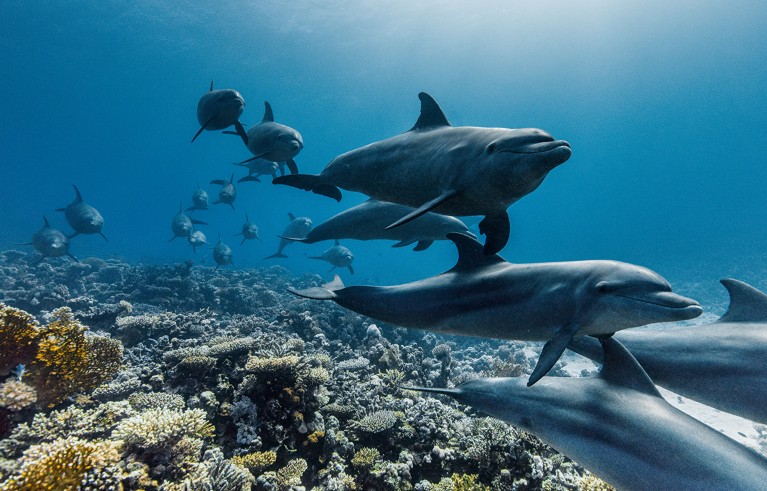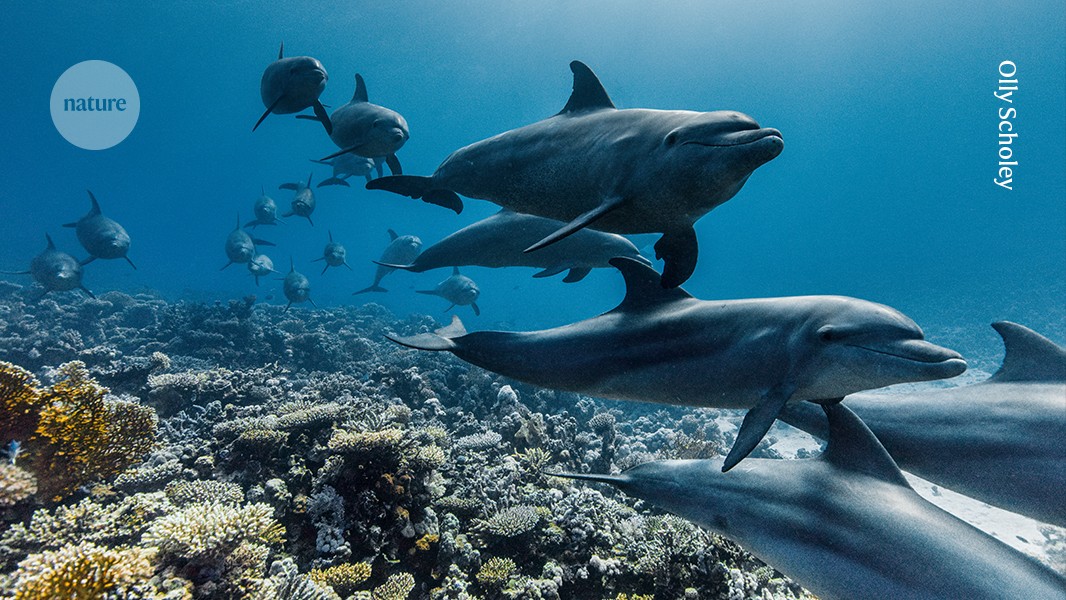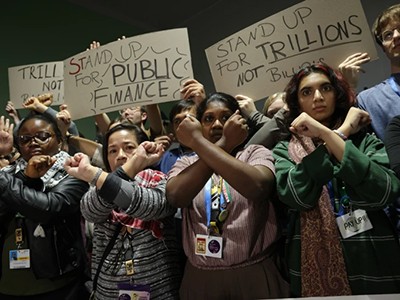
The oceans provide a range of habitats that support crucial biodiversity and human livelihoods.Credit: Olly Scholey
Ocean conservation is the 14th of the United Nations Sustainable Development Goals (SDGs), the world’s plan to end poverty and achieve sustainability by 2030. The ocean is Earth’s life-support system, offering a source of food; playing a crucial part in regulating the climate and the water cycle; and supplying a range of habitats that support biodiversity. It also provides livelihoods to people around the world. Unfortunately, by many measures, progress towards this goal is going in the wrong direction.
Over the past few years, world leaders have put their names to several ocean-related treaties and agreements. However, scientists have warned that compliance is a serious problem, as we and others have reported. At the same time, new treaties, such as an agreement on plastics, are under discussion, but these are often at high risk of being watered down, not least because of the outsized influence of oil and gas interests.
Good COPs, bad COPs: science struggles in a year of environmental summits
Next month, countries will meet in Nice, France, for the UN Ocean Conference. The aim of the event is to accelerate progress towards SDG14. Thousands of delegates will be present, representing governments, scientists, industry, campaign groups and Indigenous peoples. Many will be attending side events, as is now the norm for such meetings.
It is crucial that those representing their governments take this opportunity to thrash out agreements and disagreements, and revive existing commitments, so that SDG14 has a fighting chance of being achieved. It isn’t often that signatories to the different ocean-related treaties are in the same place at the same time. And because they won’t be in the high-stakes environment of negotiating text to a tight deadline, they will have an opportunity to take a step back and see how they can make progress.
Slow boat
There are many reasons why progress on SDG14 has been slow to non-existent. Overfishing is one. Half a century ago, 90% of fish stocks were biologically sustainable — that is, the level of fishing meant stocks could replenish themselves. By 2021, that figure had fallen to only about 62%.
Hypocrisy is threatening the future of the world’s oceans
Meanwhile, policies designed to safeguard the ocean and its biodiversity are being implemented at a slow pace. The international community has set a target of conserving 30% of the land and sea by 2030. For that to become a reality, the area under conservation will need to be increased almost fourfold in just a few years.
Add to this the pressure on the oceans from climate change. In April 2024, scientists at the US National Oceanic and Atmospheric Administration reported that the world was experiencing a global coral bleaching event — only the fourth on record, but the second within ten years. Bleaching occurs when corals expel their symbiotic algae, turning white, a process that makes them more vulnerable to starvation and disease.
Lack of finance has also stifled progress. For example, between 2014 and 2024, governments, industry and others pledged US$160 billion in support for the oceans. Of this, only $23.8 billion is classified as having been delivered, and pledges have tapered off in the past few years.
Take stock
Clearly, there’s much that governments need to talk about. When delegates meet, they must take stock of the lack of action, at least insofar as has been publicly communicated, in implementing existing international ocean-sustainability agreements. The High Level Panel for a Sustainable Ocean Economy — an agreement between 18 countries to sustainably manage their national waters — last posted a news update on its website in December.
Deep-sea mining plans should not be rushed
The High Seas Treaty is another accord in need of a boost. When it was adopted in 2023, signatories pledged to protect — and sustainably use — marine resources in the two-thirds of the ocean that lies outside national jurisdictions. These ‘high seas’ are rich in ocean life and provide habitat and migration routes for myriad species, including turtles, seabirds and whales. But so far, only 21 of the 115 countries that signed the treaty have ratified it — and 60 ratifications are needed for the treaty to become international law.
Other key agreements in need of reviving include the Agreement on Fisheries Subsidies, which bans subsidies supporting illegal, unreported and unregulated fishing, and harvesting of overfished stocks. It was adopted in June 2022 by World Trade Organization (WTO) members, and is in line with the SDG14 target to end subsidies that contribute to overfishing. So far, 97 WTO members have ratified it, but, as Nature went to press, 14 more were still needed for the agreement to become law.
Countries must also use the conference to work through some of the sticking points on talks for a global plastics treaty. More than 100 countries continue to support a proposal to curb plastic production. They are acting on the basis of research showing that plastics are suffocating the seas and endangering marine life. But oil- and gas-producing nations, and representatives of the plastics industry, oppose the plan, and are arguing that the treaty should instead focus on managing plastic waste. Nations will convene in Geneva, Switzerland, in August for the next round of talks. They must make it a priority to reach a science-led deal.
The UN Ocean Conference promises to be a rare event at which most of the key players are in the same location and free of the pressure-cooker atmosphere of a treaty negotiation. They must make the most of this opportunity. Tide and time wait for no one.





